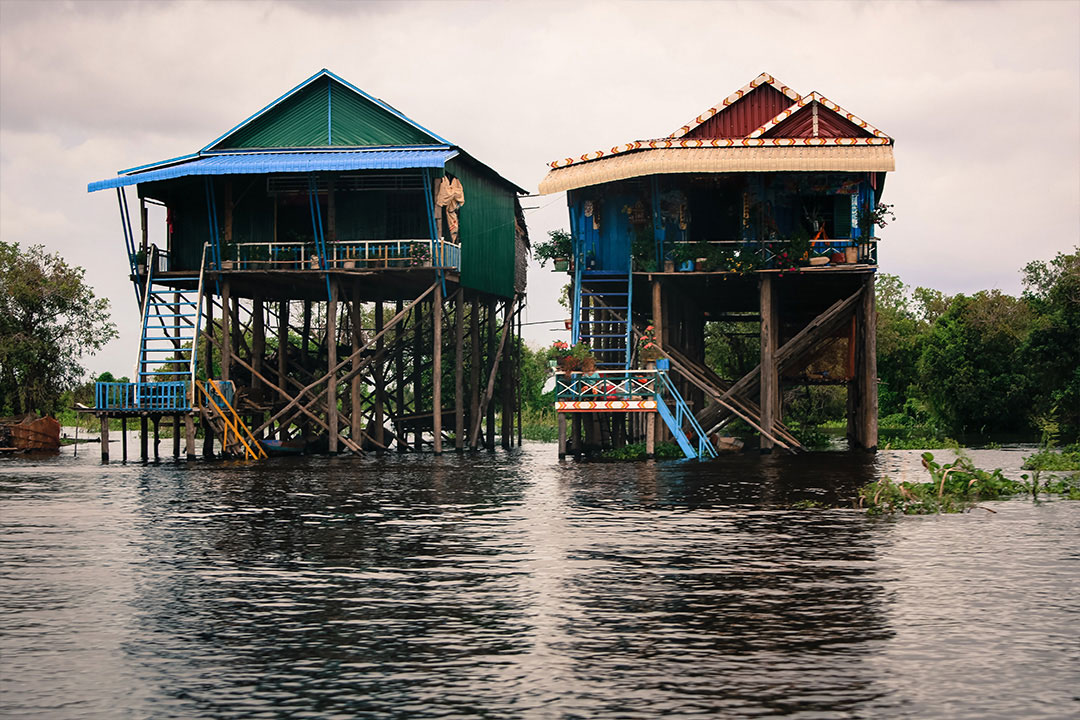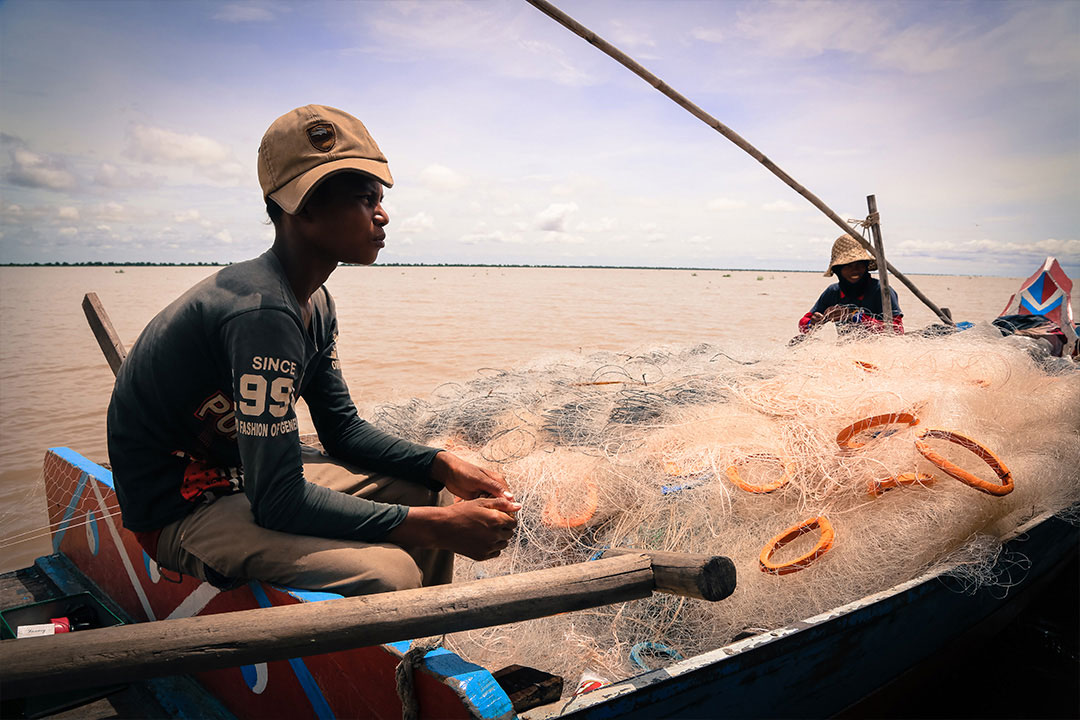Villagers Resist Relocation by Dams
Officials bring in police and soldiers, threatening arrests and imprisonment of those defending ancestral lands.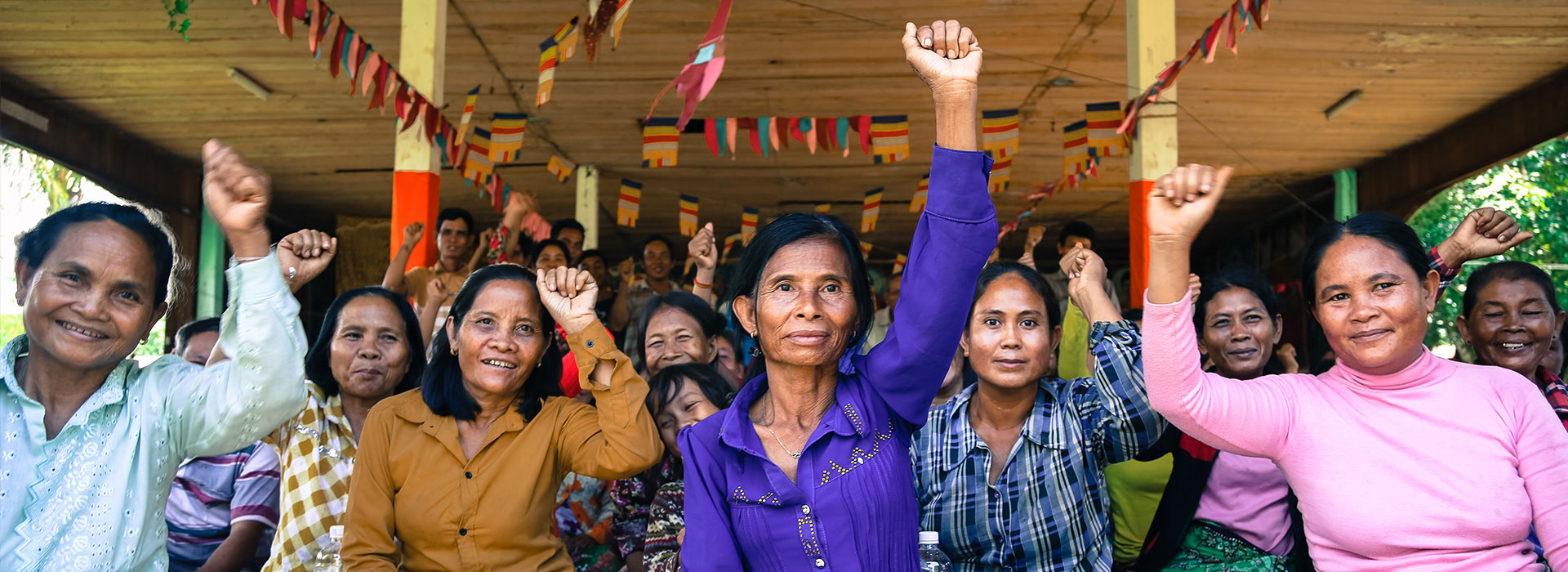
Location: Cambodia
My visa is processed in a blue wooden shack at a sleepy Cambodian border crossing, and I'm on the way to Stung Treng Province in northeastern Cambodia, where the capital city bears the same name. The landscape differs dramatically from that of Laos. Gone are the jungles and mountains. Here there are no trees. Just scrub left after logging.
About 30 miles downstream from the Khone Falls, I cross the river over a bridge. Stung Treng sits on the eastern bank. To my left, the Sekong and the Mekong Rivers merge, vast bodies of water creating one river miles wide.
Just a few miles up the Sekong River, a Chinese developer is building a massive dam. The Lower Sesan 2 will dam two tributaries, the Sesan and the Srepok Rivers.
When I was last here, the Sesan 2 was still a highly contested idea. Now, just seven years later, despite community opposition and environmental concerns, the dam is nearly finished and will begin operations in 2017.
Outside Stung Treng we’re greeted by posters promoting a smiling Prime Minister Hun Sen and his Cambodian People’s Party. We meet our guide, Chenda, from an NGO group called the Fisheries Action Coalition Team, which works with villages marked for relocation.
“If we see a bulldozer we’ll burn it.”
- Sre Kor Village Billboard
The dam will relocate some 5,000 people, including many ethnic minorities, to make way for a 33,560-hectare reservoir. But many people are refusing to leave. These are the people with whom we’ll meet.
On the long road to Sre Kor, the first village that we’ll visit, bulldozers have ripped whole trees from the ground. When we get to the village we’re welcomed by a billboard showing a monk sanctifying trees with the slogan, “If we see a bulldozer we’ll burn it.”
Two months ago the province's governor had to make a rapid retreat when the villagers tried to burn his car. Today officials are returning to try to convince the villagers to leave. As soon as we arrive, the villagers tell us we’ll need to hide until the officials leave.
After they’ve left, we rejoin the villagers, who gather in a community temple. They tell us that the officials brought in soldiers and policemen, allegedly “to protect the forests,” a strange claim to make when illegal logging is evident and this land will soon be under water.
Threatened by bulldozers
The villagers say the officials told them bulldozers would soon come with police and military escorts. They warned the villagers not to interfere or they would be arrested and imprisoned, or worse. But the threats have not changed people’s minds.
An old lady with a wide smile says, “Bulldozers? Bring them. We’re not leaving. We’ll die here if the government is not ashamed to be seen murdering us in front of the world.”
She says, “This land, this river, and those graves, they are all that we have. Our parents are there, and their parents. We can’t abandon them, or they’ll curse us.” Sre Kor’s ancestral forest is so old that the villagers don’t know where all the graves are. Every inch is sacred ground. The old lady says, “This is our way of life. This is our culture and belief. Even monks and kings have parents. How can you tell us to sell our ancestors?”
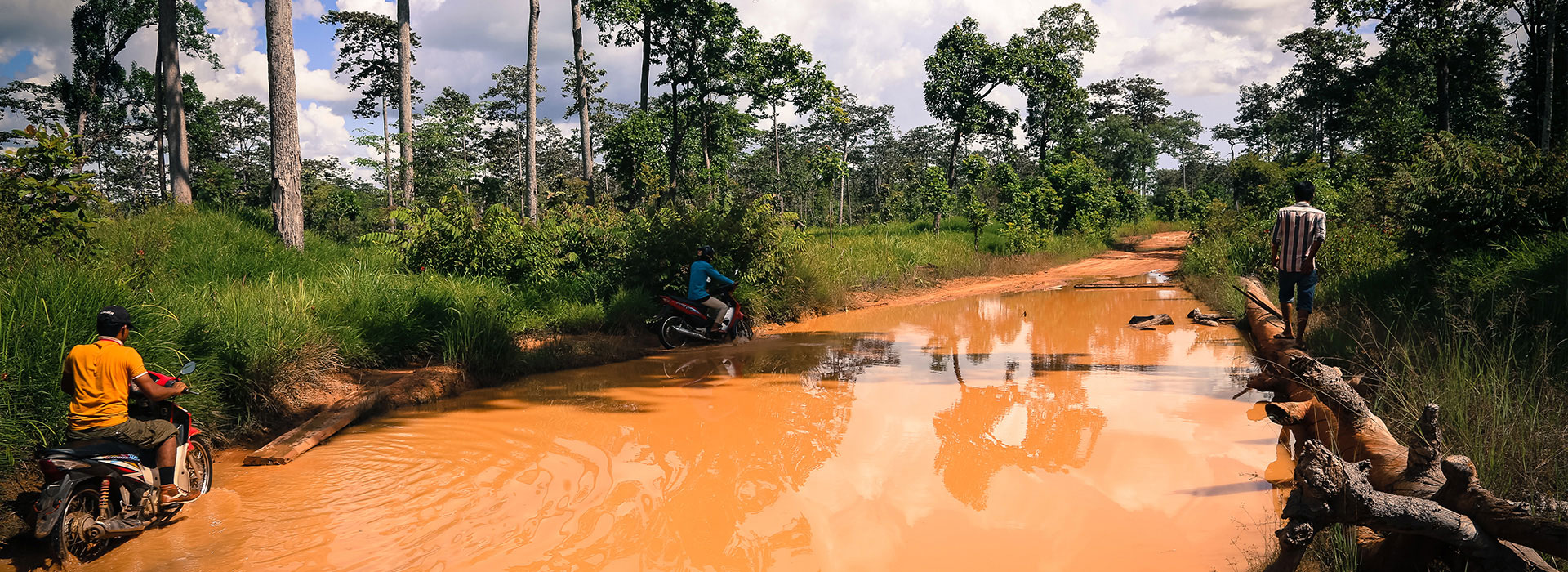
A second village lies at the end of a long trip down an often-flooded dirt track. It’s a poorer and more isolated community. The houses are made from rattan and dried-leaf walls.
The young men who’ve brought us here belong to community patrols organized to stop illegal logging, which has been rampant since the dam construction started. They show us timber confiscated from loggers. They say that they reported it to the police, who replied that if the villagers interfered again they would burn down their houses and kill their animals. In Cambodia, illegal loggers help dam developers force poor people out of their homes.
The villagers say that officials come regularly with army and police escorts to try and force them to leave. They muscle their way into homes, scaring the children and threatening people, The government has closed the local school and stopped a neonatal health worker from working in the village. Now villagers administer injections to their children themselves.
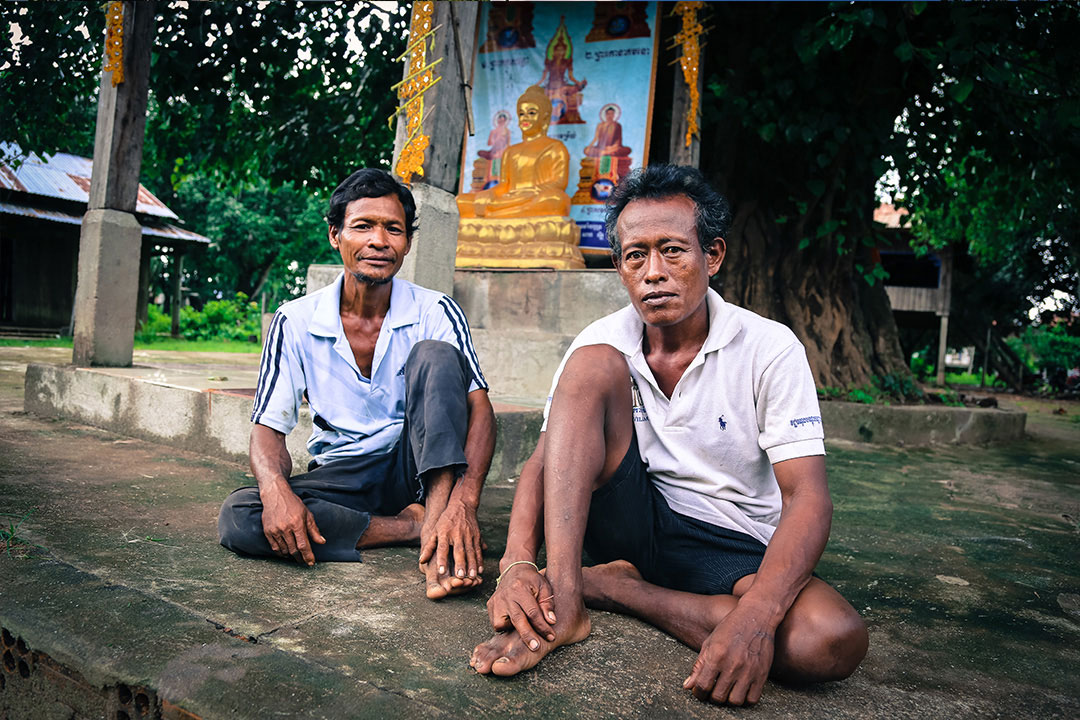
I ask them why they stay. They point to a tree with a saffron sash wrapped around its trunk, perhaps 30 feet in circumference. The tree was a sapling when this village was already old. “We love our village,” says one villager. “It’s enough. We have the river for water and fish, the forest for food, our farms for rice, vegetables, and fruit, our livestock for meat. We have a generator and a battery, a satellite dish and TV… We don't need anything else.”
They went to see a relocation village and found people there still struggling to get the compensation they were promised.
The time comes to leave. We sit on our motorbikes and in a wind-filled moment we leave the village behind us. In my mind I see water filling the forests until this village is gone.
It‘s already twilight when we arrive in the resettlement area, a raw patch of dirt with identical concrete dwellings.
In all, there will be six relocation sites covering 4,000 hectares, much of which has already been zoned for forest and land concessions. These communities will likely face future competition over their new lands.
“This land, this river, and those graves, they are all that we have.”
- Sre Kor Villager
There’s no work to be had, nor natural resources on which to build an income. Merchants on motorbikes bring in food. But this requires money, and sometimes when villagers have none they go hungry.
I speak with a few families who say that if given the choice they would have stayed in their old village. Others are leaving their children with friends and moving to the capital Phnom Penh to find work.
The next day we set out to visit the dam site itself, but we’re stopped at a checkpoint. Whatever the reason, the local authorities have decided that we’re worth watching, and now they want us to know it.
It’s time to leave. We stop on the bridge to Stung Treng to watch the Sekong and the Mekong merge one last time.
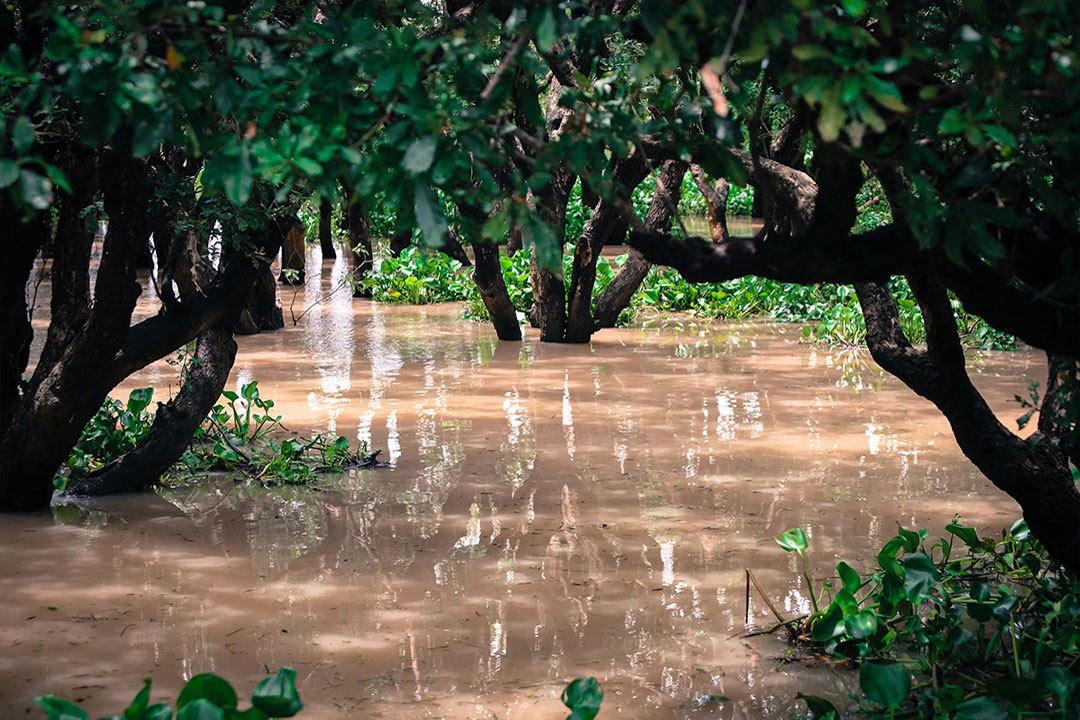
The reservoir will flood more than 1,200 hectares of agricultural land, nearly a quarter of the agricultural land in Sesan District. This will necessitate additional forest clearance.
The economic viability of this project has also been called into question. One study found that a good dam produces 10 MW per square kilometer of flooded land. Lower Sesan 2 is at the other end of this scale, generating only 1.1 MW for every square kilometer of flooded land.
A 2012 study by the Washington, D.C.-based National Academy of Sciences identified Lower Sesan 2 as the worst tributary dam in the Lower Mekong Basin for fish biodiversity. It’s expected to cause a reduction of fish biomass basin-wide and to endanger 56 fish species. These impacts will be felt across Cambodia, and even in the neighbouring countries of Laos, Thailand, and Vietnam.
But the worst may be yet to come. Several civil society sources have reported that within five to 10 years, the government will begin building a second dam currently planned downstream from Stung Treng, at Sambor. This dam will deal the final blow to one of two remaining populations of Mekong freshwater dolphins.
We drive west, passing north of the once great forest, Prey Lang, towards Siem Reap and the Tonle Sap Lake, the heart of the Mekong. We meet Mr. Chim, a representative for seven communes on the Tonle Sap working with the Fisheries Action Coalition Team.
“If the Tonle Sap is alive, then the Mekong is alive.”
- Mr. Chim, seven communes representative
Mr. Chim explains the connection between the Great Lake and the Mekong in simple terms: “If the Tonle Sap is alive, then the Mekong is alive.”
The Tonle Sap ebbs and flows with the annual cycle of the Mekong River that feeds it. This annual pulse gives the Mekong its unique character and its abundant biodiversity. Mr. Chim says that in the past five years the water flow has been unpredictable. Even the rainy season looks like the dry season of the old days, he says.
Catching a longtail boat, we cruise down the canal and through a “floating” village, a town on stilts built to ride the rising lake. People go about their business, fixing engines, mending nets, and tending pig sties and vegetable patches growing in floating pens. Leaving the village behind, we emerge from the cover of flooded forests onto the open lake.
We speak with two young boys on a fishing boat as they pull up their nets. They tell us that they work for their uncle, fishing 12 hours every day except for religious holidays. The Tonle Sap yields around 300,000 tons of fish a year, which amounts to most of Cambodia’s freshwater catch. But the boys report that sometimes they’ll set and gather nets all day without catching any fish. The youngest boy says that he’s 10. When he’s old enough, he wants to move to the city and find work on a construction site.
Mr. Chim says that fish are being blocked by the dams, while pollution is adding to the difficulties local people face. They believe that whatever is in the water is causing stomach complaints and is beginning to reduce fish fertility. To make matters worse, industrial fishing concessions are undermining local fishers and village economies. This in turn damages poor people’s health.
This is the start of a manmade crisis. In a nation where freshwater fish account for around 75 percent of all animal protein in people’s diets, researchers now predict that by 2030 dams could cause a dramatic decline in fish consumption. Replacing fish as a source of protein will be virtually impossible.
For millennia the November turning of the Tonle Sap has carried a tide of fish to every corner of the Mekong. But now this tide is being replaced with a one-way outward migration of people leaving communities under stress.
Mr. Chim says most families can't afford an education, and the young must work. He says, “We’ll try our best to stay here and not go to Thailand or Korea to find work.”

